Almost all of us had to deal with the manifestations of helminthiasis. These parasites have lived with humans for so long that Hippocrates himself mentioned them in his writings. According to WHO statistics, more than five billion people on Earth are currently affected by various types of helminthiasis.
The pharmaceutical industry regularly manufactures modern products aimed at neutralizing parasites in the human body, and folk remedies for helminthiasis that complement traditional treatments have also lost their relevance.
About helmets
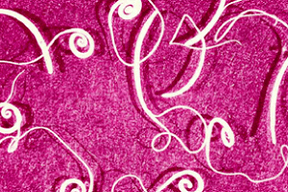
About 250 species of parasites live in human tissues and organs. Each can be divided into two classes:
- flatworms (nemotode);
- tapeworms (cestodia and trematodes).
They range in size from a few millimeters to 10-12 m. Parasites become sexually mature very quickly, after which they lay ten to a hundred thousand eggs a day.
These eggs remain viable for a long time, even when the conditions are not the best. Types of organisms affected by parasites, according to their stage of development:
- the final host in which helminths can develop up to the stage of puberty;
- an intermediate host where helminths live until one of their stages of development.
In the body of the final host, the parasite can often complete its entire cycle of development and live in it for decades. For different types of parasites, a person can be a final and intermediate host, as can molluscs, fish, and carnivores. According to the type of biological cycle, cases of infection with parasites are classified as follows:
- biohelminthiasis - the development of helminth occurs in different types of organisms;
- geohelminthiasis - helminths spend part of their developmental cycle in the soil without an intermediate host.
How does a parasitic infection work?
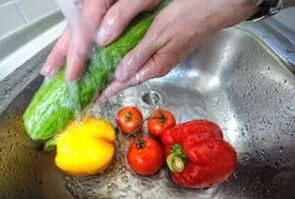
The ways in which helminths enter the human body are very varied, depending on social characteristics, natural and climatic factors, and food preferences. The main ways to infect helminths are:
- Through dirty hands, contaminated water, poorly processed food.
- Inhalation of dust particles with worm eggs;
- Through the skin;
- As an intermediate host after mosquito bites (Wuchereria bancrofti);
- In case of consumption of contaminated seafood, meat, fish (trematode).
The nutritional characteristics of some northern peoples suggest eating lightly salted and raw fish. The prevalence of trichinosis and echinococcosis is high in this population.
What organs are affected by helminthiasis
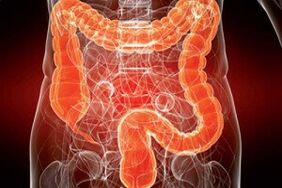
The defeat caused by helminths can be localized in many organs and tissues. The localization of the intestinal worm depends on the stage of development, so at different stages of its existence, the same worms can parasitize different parts of the intestine. Organs affected by helminthiasis:
- Colon worm, pinworms;
- Duodenum - Strongyloides stercoralis;
- lymphatics,
- Lungs - Paragonimidae;
- Subcutaneous tissue - Larva migrans.
- Helminths parasitize the hollow organs and tissues of the human body.
Depending on the location of the parasites, helminthiasis can be classified into:
- tissue (echinococcosis, cysticercosis);
- translucent (taeniasis, enterobiasis, ascariasis).
Some larval worms transform tissues in the human body to form capsules or granules around them (trichinella, toxocara). There is a type of worm that migrates at the stage of the larvae and under the skin of a person, as well as in the tissues of its organs (larval specimens).
Their temporary stay in the human body takes both a visceral and a skin form, for them a person is an intermediate host.
Clinical manifestations of helminthiasis
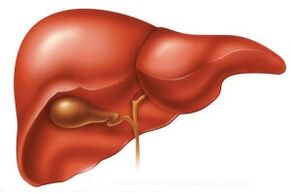
Like many other infections, helminthiasis goes through two stages of development: acute and chronic. Their duration:
- acute stage - from 2-3 weeks to several months;
- chronic phase - from 2-3 months to several years.
Despite the different types of helminths and their localization, there are common manifestations of the symptoms of the acute stage - these are the symptoms of allergies and toxic effects on the human body:
- slight rise in temperature;
- muscle pain
- skin rashes,
- limb edema
- enlarged lymph nodes,
- dyspepsia,
- enlargement of the spleen and liver,
- CNS damage.
Indicates a change in the formula of a laboratory blood test - eosinophilia and a significant increase in the number of leukocytes are diagnosed. The transition to a chronic stage of helminthiasis is characterized by symptoms that depend on which organ is affected by the stage of development, number, and type of parasites, worms. In the chronic stage of helminthiasis, the following symptoms are diagnosed:
- dyspepsia and intestinal pain
- ileus,
- colitis in bleeding form,
- anemia,
- avitaminosis,
- drastic weight loss
- obstructive jaundice, hepatitis (with liver damage),
- loss of certain functions of the central nervous system (by localizing parasites in the brain),
- inflammatory diseases of the pelvic organs (when worms migrate into the vagina),
- gastric and intestinal ulcers (with chronic strongyloidiasis),
- damage to muscle tissue, formation of granulomas in the capillaries of the brain (with severe trichinosis),
- damage to the lymphatic system (infected with nematodes).
With helminthiasis caused by echinococcus, not only are liver cysts formed, but parasites can damage bone tissue. This makes the bones fragile and poses an additional risk to bone fractures. The defeat of the human body occurs in the form of subcutaneous nodule formation containing parasites by the larvae of Dirofilaria repens. This node is able to move through the thickness of the skin and mucous membranes.
Analyzing the symptoms of helminthiasis, one can be sure that there is no stable clinical picture of this disease, no clear specific signs.
Diagnosis of a parasitic infection
If you do not make an accurate diagnosis in time, you may miss the time when starting treatment may be most effective.
The transition from helminthiasis to the chronic form of helminthiasis often obscures the true cause of the disease.
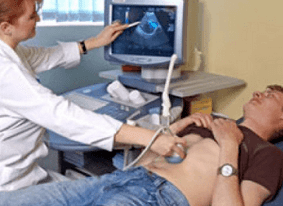
Infection with parasites can be confused with symptoms of completely different diseases.
It is extremely important that you do not self-medicate, but seek medical help from an infectious disease specialist or parasitologist. There are enough modern methods in your arsenal to diagnose a parasitic infection:
- faeces, bile, sputum, blood, urine, rectum and
- prianal scraping of mucus, duodenal contents for the detection of parasites, their eggs and larvae;
- Ultrasound, radiography;
- Endoscopy, endobiopsy.
The most effective method is considered to be a serological test - a method of analyzing blood serum for the presence of antigen in certain types of worm infections.
This study may detect the presence of parasites even in the early stages of infection.
Treatment of parasitic infection by folk methods
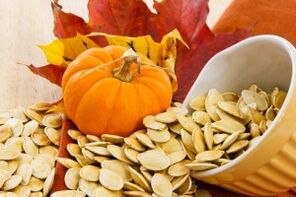
According to the results of the diagnosis, the doctor prescribes anthelmintic therapy, the timing of the control test after treatment.
All recommendations from a specialist should be followed carefully to avoid complications.
It is unnecessary to be reminded to observe preventive hygiene measures that prevent family members from becoming infected with parasites and secondary infections.
Proponents of the use of folk prescriptions should remember that the use of these funds is a complementary method that is not a substitute for medication.
Like traditional drugs, drugs have contraindications and side effects. This is why you should discuss this method with your doctor before using them. Home Remedies:
- Peeled pumpkin seeds for 2 weeks, keeping the thin green peel on the seeds.
- A decoction of a pomegranate peel 3/4 tbsp. boiling water. The drug should be taken on an empty stomach, this should be done in an hour and a half, dividing the broth into three portions. After a few hours, be sure to stimulate the stool with any laxative.
- The infusion with freshly squeezed carrot juice (40 ml) should be done daily for 7 days.
- Regular use of garlic and preparations containing it.
- Introducing a whole clove of garlic into the rectum (against enterobiasis).
- Consume freshly prepared garlic juice (10-15 ml) with warm milk (1 glass), the mixture should be taken on an empty stomach, the drug should be repeated 1-2 times a day.
- Infusion of 50 g of garlic and grated horseradish mixture in half a liter of vodka. The mixture was infused for 1. 5 weeks and filtered. Mandatory portion - 1 tbsp. l. the infusion should be washed before each meal. Effective in giardiasis.
- Garlic enema taken shortly before going to bed is effective against fungal and tapeworm. Enema solution: mix in a glass of water 1 tsp. finely chopped garlic. Exercise regularly throughout the week.
- 2 cloves garlic decoction, 2 tbsp. milk, 1 tbsp. l. dried tansy flowers are used as an enema. The enema mixture should be boiled for about 10 minutes. Perform 7 times, the effect of the treatment can be recorded by repeating the course after a ten-day break.
Herbs and fees:
- 1 tsp dried wormwood pour 400 ml (2 tablespoons) of boiling water, filter and cool, take 1-2 tablespoons of infusion. l. three times daily before each meal. Effective for ascariasis and enterobiasis.
- Tansy (1 tbsp. Dried flowers) and 0, 5 liters of boiling water for 3 hours and infusion into the rectum before going to bed. The drug is contraindicated in pregnant women and children.
- Infusion for half an hour with 4 tbsp. l. immature nuts and a glass of boiling water are filtered off and taken at the same time as a laxative. Effective against tapeworms, ascariasis, enterobiasis.
- 1 st. l. tansy flowers pour 200 ml of boiling water, one hour later the infusion is filtered. Recording frequency is standard - Art. L. 20 minutes before meals. So it should be treated for 2-3 days, end the infusion with a laxative.
- Boil a decoction of 1 kg of sorrel and 1 liter of boiling water for 2 hours (better to do in a water bath), strain, add a few tablespoons of sugar. The volume of the final product is 1 glass of broth, drink 1-2 sips daily before meals.
- Helminthiases are complex infections with a multicomponent clinical picture. They can cause serious complications, irreversible damage to human health.
Self-healing is unacceptable if you are infected with parasites. Folk recipes should be used with extreme caution only as an adjunct to medication.






































